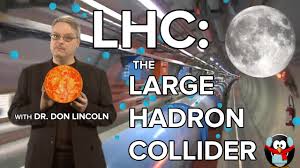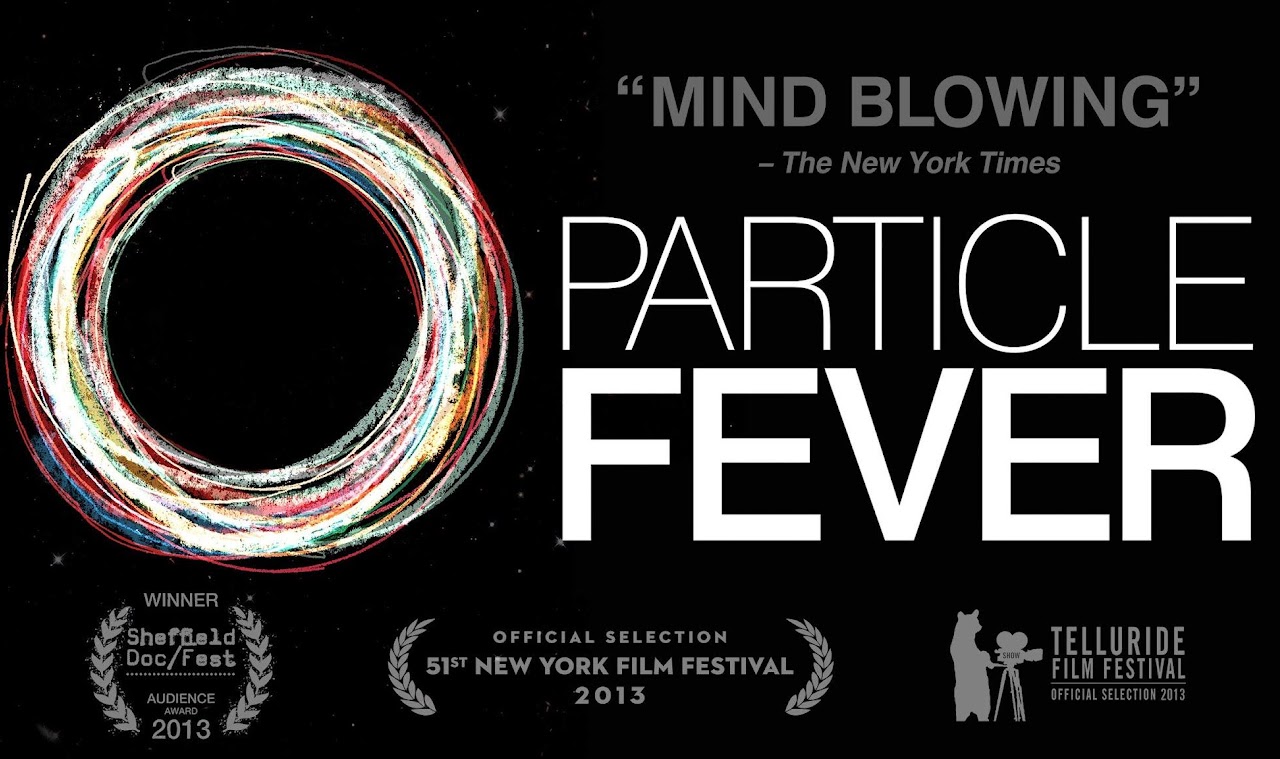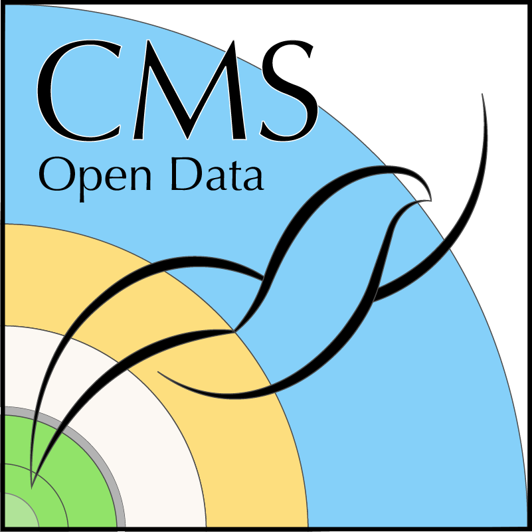Content from Introduction
Last updated on 2024-07-09 | Edit this page
Estimated time: 11 minutes
Overview
Questions
- What is particle physics?
- What is happening at the LHC?
Objectives
- Develop a very broad overview of what particle physics is
- Develop a very broad overview of what particle physicists do
Introduction
Particle physics is an broad field which focuses on the study of the very smallest particles. Even smaller than atoms!
If you only had 5 minutes to learn about particle physics and wanted the simplest explanation possible, you could do worse than the Simple Wikipedia entry for “Particle Physics”. Please read this!
If you only had more time and could handle a higher level of discussion, a good starting point is the standard Wikipedia entry for “Particle Physics”. Much of the material in the article will be covered in the next episodes of this lesson, but feel free to read through it for a preview of what is to come.
Overview of this lesson
You probably want more though, so we’ve provided more materials to prepare you for the workshop.
- First, we have some videos aimed at the public that provide a broad overview of particle physics. They’re not terribly long and worth watching. Given time, we also recommend a good documentary about the discovery of the Higgs particle.
- We are fortunate to have access to some excellent lectures by one of our collaborators, Dr. Allison Hall. There are six (6) lectures and while all are great, we strongly encourage new students to at least watch the first 3. All the lectures have some optional exercises and links to additional resources.
- Then we end with some basic computing challenges that walk you through a toy example of discovering particles.
Good luck and enjoy learning about the fascinating field of particle physics!
Key Points
- Particle physics is the study of the objects that make up atoms.
- Particle physicists try to understand how these particles interact with each other.
- They often need to push the limits of technology to experimentally test different theories.
Content from Videos for the general public
Last updated on 2024-07-09 | Edit this page
Estimated time: 63 minutes
Overview
Questions
- What is the LHC?
- What is CERN?
- What is the CMS experiment?
- What are we trying to do at these experiments?
Objectives
- Understand what takes place at CERN
- Understand what the Large Hadron Collider is
- Understand some of the specifics about the CMS detector
Videos
The CMS experiment
A nice overview of the CMS experiment from the CMS experiment’s YouTube channel. If you only watch one of these videos, this is the one!

The LHC
A oldie, but a goodie. A discussion of the Large Hadron Collider, by Don Lincoln of Fermilab. You can find more of his videos over on Fermilab’s YouTube channel.

What are we doing and what comes next?
A discussion of what CERN and the LHC experiments have accomplished and what comes next? From Cleo Abram’s YouTube science popularizing channel “Huge if true”.

Watch a movie!
If you have time, grab some family and friends and watch Particle Fever, the 2013 documentary about the discovery of the Higgs Boson.
There are different streaming services that provide access to the movie and we leave it to you find one that works for your situation and your country’s viewing options.
From Wikipedia:
Particle Fever is a 2013 American documentary film tracking the first round of experiments at the Large Hadron Collider (LHC) near Geneva, Switzerland. The film follows the experimental physicists at the European Organization for Nuclear Research (CERN) who run the experiments, as well as the theoretical physicists who attempt to provide a conceptual framework for the LHC’s results. The film begins in 2008 with the first firing of the LHC and concludes in 2012 with the successful identification of the Higgs boson.

Key Points
- CERN is a multinational particle physics lab in Geneva, Switzerland
- The LHC is a 27-km proton accelerator that is used by multiple experiments to study the building blocks of matter
- CMS is one of these experiments and had a role in the discovery of the Higgs boson
- There is more new physics waiting to be discovered!
Content from Lectures and exercises
Last updated on 2024-07-09 | Edit this page
Estimated time: 183 minutes
Overview
Questions
- What do we mean by “The Standard Model”?
- How did we develop our understanding of particles and forces?
- What role do experiments have in pushing and confirming theories?
- What are the outstanding questions in particle physics?
Objectives
- Understand the historical development of the standard model of particle physics
- Understand the role that special relativity plays in experimental analyses
- Develop a broad understanding of the specific theories and calculational techniques that we use to predict and interpret our experimental results
Lectures
QuarkNet is a long-running program that engages high school teachers across the United States by connecting them with particle physicists. The program is supported by the National Science Foundation (NSF) in the US and ran out of Fermilab.
The first step is usually to teach the teachers about this science. In 2020, one of our CMS collaborators, Dr. Allison Hall a faculty member in the Physics Department at the US Naval Academy, presented a series of six (6) lectures at the QuarkNet Summer Session for Teachers, all of which were recorded over Zoom. That link contains the slides, recorded lecture, and a set of exercises and problems that you can do to assess how well you understand the material. Each lecture also comes with additional links and videos.
If you are new to particle physics, we strongly recommend you go through the first three (3) lectures (either follow the recordings or go through the slides on your own) and perhaps try out some of the associated exercises.
For those who want to go further, the final three (3) lectures should pique your interest!
In the following sections, we have copied the descriptive language verbatim from the QuarkNet website, to save you some time in figuring out how you want to spend your time.
Session 1: Historical Overview of the Standard Model’s Development - Part 1
“Understand the driving motivations and important events in the history of particle physics and quantum field theory. Part 1 will cover the theories of the ancient Greeks up to the development of quantum mechanics.”
Session 2: Historical Overview of the Standard Model’s Development - Part 2
“Understand the driving motivations and important events in the history of particle physics and quantum field theory. Part 2 will cover the history of the Quark model, neutrinos, force particles, and the discovery of the Higgs boson in 2012.”
Session 3: Particle Physics at the Large Hadron Collider
“In this lecture, we will finish the history of the Standard Model and discuss how physicists use colliders to probe fundamental particles and discover new particles such as the Higgs boson.”
Session 4: Beyond the Standard Model at the Large Hadron Collider
” In this lecture, we will discuss how physicists use the LHC to search for evidence of new physics. We will briefly talk about prospects for future colliders after the LHC.”
Session 5: Neutrino Physics
“In this lecture, we will discuss the big questions and big experiments in neutrino physics.”
Session 6: Dark Matter
“In this lecture, we will discuss the evidence for dark matter and the different ways scientists are studying it. We will end the course with a discussion of what’s next in particle physics and why particle physics is worth doing”
Lecture and supplementary materials
Key Points
- Special relativity provides a different relationship between energy, momentum, and mass than classical physics.
- High energies correspond to shorter wavelengths and probing nature on a smaller scale.
- Experiments like those at the LHC have been critical in discovering new particles and new forces.
- The standard model of particle physics explains almost all the interactions we have observed in our experiments.
- Neutrinos are not as well understood as we would prefer, particularly with respect to their masses.
- While the effects of dark matter are well established on galactic scales, we do not understand exactly what is causing those observations.
Content from Toy analyses
Last updated on 2024-07-09 | Edit this page
Estimated time: 125 minutes
Overview
Questions
- How can we use momentum and energy to calculate the mass of a particle?
- How do we use this to discover particles too short-lived to travel through our detector?
Objectives
- Understand the basics of how we use 4-vectors in our analyses
Background
Most experimental particle physicsts these days use the python programming language in their analyses. Python is used in many fields and many colleges use it as their introductory programning language.
This section assumes you have some familiarity with python and will show you how to perform some very simple analyses to discover new particles. We will be making use of open data from the CMS experiment that has been reformatted into an even simpler form that you will use in the bulk of the workshop. This will allow you to focus on the physics concepts and not let the details of more sophisticated programming approaches get in the way.
This section is not required but for folks who are brand new to particle physics and experimental analyses, it might be a good way to prepare yourself for the more challenging tasks ahead.
Particle Physics Playground
The Particle Physics Playground (PPP) is a website maintained by one of our CMS collaborators, Matt Bellis at Siena College that provides simplified particle physics data for use in education and training.
The website provides tutorials and exercises in python, hosted with the Google Colab programming environment. Colab hosts Jupyter notebooks in Google’s cloud so that you can run your python code from any computer, simply by logging into a Google account. You can test out Colab here though you will need a Google account. This is a good tutorial on working with Colab and saving files to your account on Google Drive.
On the Particle Physics Playground, there are a number of Colab notebooks that you can open and run. However, if you want to save your edits, you will need to make a copy of your work and save it to your drive. Instructions for how to do this are in each notebook
Let’s walk through a series of activities that explain how to work with these data, how to make simpler calculations, and how to do a more complicated analysis to discover new particles.
Working with Colab and the data formats
Go to this PPP page and watch the videos
- “Using Colab for the first time”
- “Importing necessary tools into Colab”
- “The data format and how to interface with the data”
CMS and the data format
Try this Colab activity to learn about how to import the data and how it is structured.
Lifetimes of particles
Some particles live for very short periods of time before decaying to other particles. In fact, the original particle may live for such a short period of time that it decays before ever interacting with any of our detectors.
It turns out that only a handful of particle live long enough to actually be detected directly in CMS. Run through this activity you are asked to look up the lifetimes of particles and try to figure out which particles can be detected directly in CMS.
4-vectors and calculating masses
Particle physicists are always making histograms. A lot of histograms. :)
In this activity you are asked to calculate and make a histogram of the masses of many muons. Hopefully you get a very tight cluster around 0.105 GeV/c^2.
Discovering new particles
For particles that do not live long enough to pass through our detectors, we must infer their existence by reconstructing them from their decay products. We measure their energy and momentum separately and use 4-momentum arithmetic to calculate the energy, momentum, and mass of the parent particle.
Go through this activity to “discover” new particles by looking for bumps in your histogram plots.
Key Points
- Special relativity provides a mechanism for determining the mass of particles
- We can use the decay products to infer the existence of particle with extremely short lifetimes
